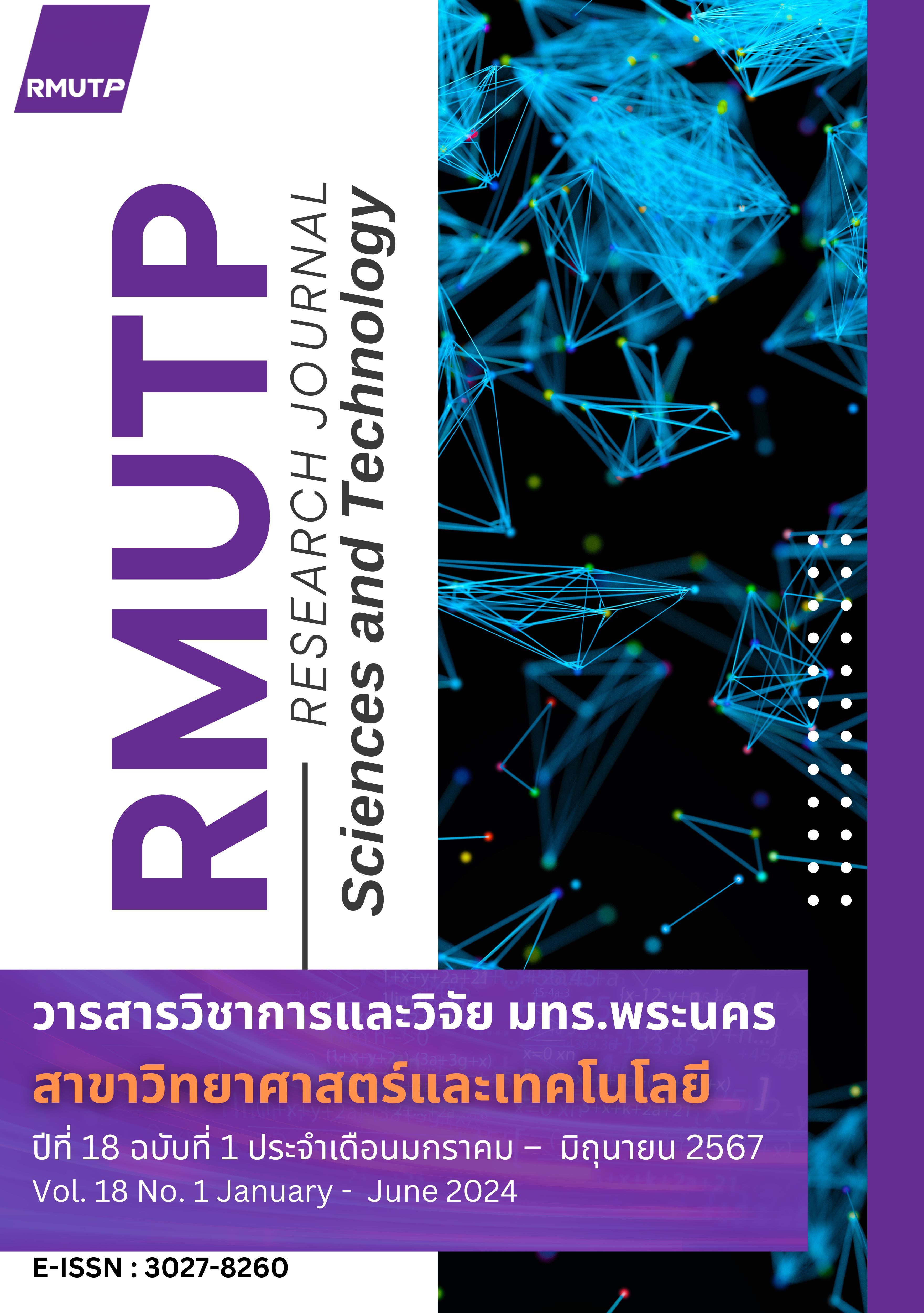Study on Antioxidant Activities and Total Phenolic Contents Analysis from the Elixir Extracts
Main Article Content
Abstract
According to folk medicine beliefs, elixir was a body tonic with properties that help people stay healthy and live longer. The purposes of this research were to compare the antioxidant activities, and to compare the total phenolic contents from bolus elixir extracts. The drug was extracted by boiling with distilled water and maceration with 95%, 70%, and 50% ethanol, respectively. The results showed that extracts with 50% ethanol had the best antioxidant activities, and found the highest total phenolic contents as follows: 2,2-Diphenyl-1-picrylhydrazyl (DPPH) radical scavenging assay gave IC50 of 87.23±1.53 µg/mL, Ferric reducing antioxidant power (FRAP) assay showed the value was 40.96±0.91 mgFe2+/g, and Trolox equivalent antioxidant capacity (TEAC) value was 20.33±0.85 mgTrolox/g, and total phenolic contents was equal to 25.53±1.54 mg GAE/g. The extracts with 70%, 95% ethanol, and distilled water showed less effective than the extracts with 50%, respectively.
Article Details

This work is licensed under a Creative Commons Attribution-NonCommercial-NoDerivatives 4.0 International License.
ลิขสิทธ์ ของมหาวิทยาลัยเทคโนโลยีราชมงคลพระนครReferences
B. Halliwell and J.M.C. Gutteridge, “Oxygen free radicals and iron in relation to biology and medicine: some problem and concepts,” Arch Biochem Biophys, vol. 246, pp. 501-514, May 1986.
V. Lobo, A. Patil, A. Phatak, and N. Chandra, “Free radicals, antioxidants and functional foods: Impact on human health,” Pharmacogn Rev, vol. 4, no. 8, pp. 118-26, Jul-Dec 2010.
A.M. Papas, “Determinants of Antioxidant Status in Humans,” in Antioxidant Status, Diet, Nutrition, and Health, 1st ed. New York: CRC Press, 1999, pp. 89-95.
B. Phansawan, “Free radicals, Antioxidants and Antioxidant Activity Determination,” Thai Science and Technology, vol. 21, no. 3, pp. 266-286, Jul - Sep 2013.
P.R. Miliauskas, Venskutonis, and T.A. Van Beek, “Screening of radical scavenging activity of some medicinal and aromatic plant extracts,” Food Chemistry, vol. 85, no. 2, pp. 231-237, April 2004.
S. Pitiporn, “Records of the Land, 7 Medicinal Herbs for Mae Ying,” in Chaophraya Abhaibhubejhr Hospital Prachinburi, 1st ed. Bangkok, 2014
R. Tangbuchakiat, “Total Antioxidant Activity of Herbals in Anti-Aging Formulas Extracted with Different Solvents Using Abts Radical Scavenging Assay,” in Proceeding of National Rangsit University, Collage of Oriental Medicine, Rangsit University, Pathum Thani, Thailand, 2019, pp.1-9
W. Boonsinchai, S. Thapphasaraphong, N. Nualkaew and S. Nualkaew “Antioxidant activity and total phenolics of herbal extract of combination from mulberry leaves, turmeric rhizome ,lakoocha’s wood and shiitake.” In Proceeding The 7th Annual Northeast Pharmacy Research Conference Faculty of Pharmaceutical Sciences, Khon Kaen University, Thailand, 2015, pp.267-272
A. Upadhyay, P. Chattopadhyay, D. Goyary, PM. Mazumder and V. Veer, “In vitro fibroblast growth stimulatory and in vivo wound healing activity of Cleome viscosa,”. The Journal of Orient Pharm Exp Med, vol.14, no 269-278., Feb, 2014
S. Lenapun, J. Jamthaweekul and J.Chaiwut, “Chemical Specifications of Piper sarmentosum Roxb. Roots,” The Journal of Thai Traditional and Alternative Medicine, vol.12 no. 2, May-Aug, 2014
Y. Maneepisamai, P. Yasin and S. Simarugumpai, “Anti- inflammatory activity and anti-dermatitis-causing bacterial activity of Blumea balsamifera (L.) DC. leaf extracts,” Chandrakasem Rajabhat University, vol. 18, no. 35, Jul-Dec, 2012.
W. Neelapong, B. Phonyotin and W. Sittikijyothin, “Extraction of Active Compounds from Thai Herbs: Powder and Extract,” The Journal of KMUTNB, vol. 29, no. 1, Jan-Mar, 2019.
T. Hatano, R. Edamatsu, M. Hiramatsu, A. Mori Y. Fujita, T. Yasuhara, T. Yoshida and T. Okuda, “Effect of the interaction of tannin with co-existing substances VI. Effect of tannins and related polyphenols on superoxide anion radical, and on 1,1-diphenyl-2-picrylhydrazyl radical,” Chem. Pharm. Bull, vol. 37, no. 8, pp. 2016-2021, 1989.
K. Yamazaki, A. Hashimoto, Y. Kokusenya, T. Miyamoto and T. Sato, “Electrochemical method for estimating the antioxidative effect of methanol extracts of crude drugs,” Chem Pharm Bull, vol 42, no. 8, pp. 1663-1665, 1994.
I.I.F. Benzie, J.J. Strain, “The ferric reducing ability of plasma (FRAP) as a measure of ‘‘antioxidant power’’: the FRAP assay,” Anal Biochem, vol. 239, no. 1, pp. 70–76, July 1996.
K. Rodríguez, K.S Ah-Hen, A. Vega-Galvez, V. Vasquez, I. Quispe-Fuentes, P. Rojas, and R. Lemus-Mondaca, “Changes in bioactive components andantioxidant capacity of maqui, Aristotelia chilensis [ Mol] Stuntz, berries during drying”: LWT - Food Science and Technology, vol 65, pp. 537-542, Jan, 2016.
K. Koedkeao, T. Phanhun and A. Sunthitikawinsakul, “Analysis of Antioxidant Activity, Total Phenolics and Total Flavonoids Contents,” in Proceeding of 10th National Kasetsart University, Nakhon Pathom Rajabhat University, Thailand, 2013, pp. 1-8
N. Huayhongthong, “Phytochemical Screening and Biological Activities of some Thai Medicinal Plants Using in the Diabetes Therapy,” M.S. thesis, Radiation Lab., Univ. Thailand, 2016.
O. Chantaravichit and C. Ongard, “Total Phenolic Compounds, Antioxidant Activity, and Antimicrobial of Weed Extracts,” Agricultural Sci. J, vol 46, no. 3, pp.285-288, 2015.


